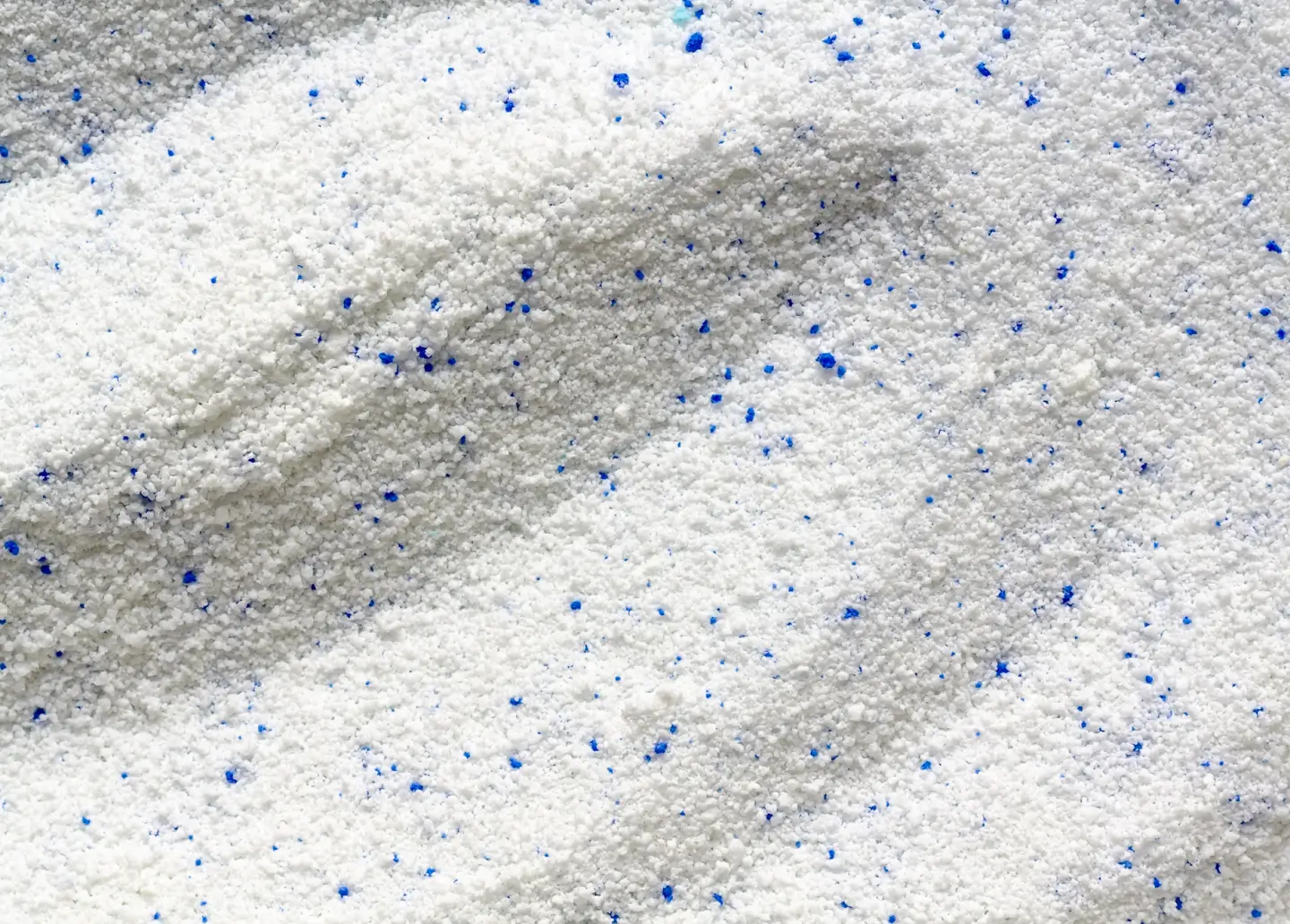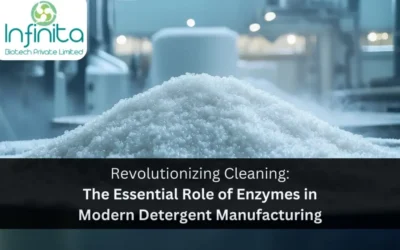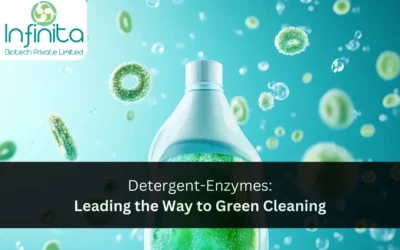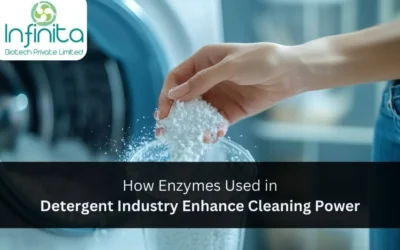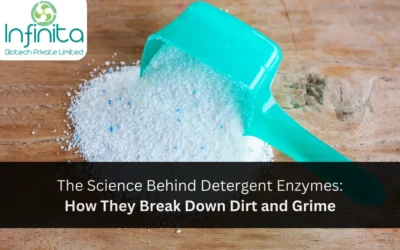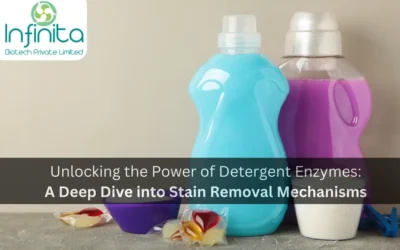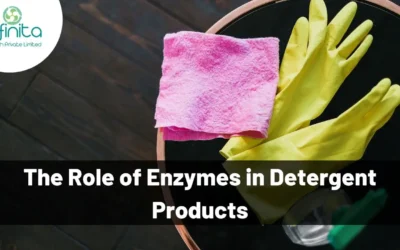Benefits Of Enzymes In Detergents
Laundry enzyme is one sort of biological enzymes that are as often as possible utilized in the laundry business, and furthermore it is as yet the biggest industrial enzyme application and in this manner, the laundry catalyst assumes a noteworthy job in helping both household laundry and the relative industrial business. Laundry enzymes are sub-class of chemicals, and in this way, they are likewise biological catalysts with poly-atomic structure. They typically exist as meagre blue particles or specks in both fluid and powder detergents, and once reaching with water they disintegrate quickly, by acting as a catalyst, the detergent enzymes increase the rate of the reaction among stains and aqueous solutions. In this way, laundry enzymes are suitable for stain removal. The option of laundry catalysts in cleanser items improves the efficiency and efficacy of detergents and furthermore makes the procedure all the more environmentally friendly, and accordingly, detergent makers are eager to update their items with laundry enzyme formula included. With the buyers’ high enthusiasm for new bio-system gradually developing, laundry enzyme detergents are turning out to be increasingly more well known in the world, which reveals the achievement of laundry enzyme’s application in the business. There are five classes of proteins found in laundry enzymes- proteases, amylases, lipases, cellulases, and mannanases.
Dirt comes in numerous types and incorporates proteins, starches and lipids. What’s more, garments that have been starched must be liberated of the starch. Utilizing cleansers in the water at high temperatures and with vivacious mixing, it is conceivable to dispel most kinds of dirt however the expense of heating the water is high and protracted mixing or beating will decrease the shelf life of the garments and other materials. The utilization of enzymes permits lower temperatures to be utilized and shorter times of agitation are required, frequently after a primer time of soaking. All in all, enzyme cleansers dispel proteins from garments ruined due to blood, milk, sweat, grass, and so forth. Detergent enzymes must be savvy and safe to utilize. Early endeavours to utilize proteases floundered on account of makers and clients developing hypersensitivity. This was combatted by creating dust-free granulates (about 0.5 mm in breadth) in which the chemical is fused into an inner centre, containing inorganic salts (e.g., NaCl) and sugars as an additive, bound with fortifying, strands of carboxymethyl cellulose or comparative defensive colloid. This centre is covered with inactive waxy materials produced using paraffin oil or polyethylene glycol in addition to different hydrophilic covers, which later scatter in the wash. This mix of materials both forestalls dust development and secures the proteins against harm by other parts of the detergent during storage.
Biological catalysts are utilized in shockingly modest quantities in most solutions of detergents just 0.4 – 0.8% crude enzyme by weight (about 1% by cost). It follows that the capacity to survive the conditions of utilization is a more significant criterion than extreme affordability. Albeit one impact of including enzymes is that lower washing temperatures might be utilized with resulting savings in energy consumption, the enzymes must maintain activity up to 60℃.
Notwithstanding the granulated structures, intended for use in detergent powders, liquid solutions in water and slurries of the compound in a non-ionic surfactant are accessible for formulating in fluid ‘spotting’ concentrates, utilized for expelling stubborn stains. Solutions containing both Termamyl and Alcalase are made, Termamyl being adequately impervious to proteolysis to maintain their activity or enough time to fulfils its function. It ought to be noticed that all the proteolytic catalysts portrayed are reasonably vague serine endoproteases, giving favoured cleavage on the carboxyl side of hydrophobic amino corrosive buildups however equipped for hydrolysing most peptide bonds. They convert their substrates into little, promptly solvent pieces which can be expelled effectively from materials.
The biological catalysts are provided in structures appropriate for formulation by detergent producers. Domestic users know about powdered solutions however fluid solutions for utilisation at home are progressively available. Household washing presents issues not quite the same as those of industrial washing: the household wash comprises of an extraordinary assortment of fabrics dirtied with a range of materials and the user requires convenience and viability with less thought of the expense. Home detergents will most likely incorporate both amylase and a protease and an extensive warm-water soaking time will be prescribed. Industrial washing requires viability at least expense so warmed water will be re-utilized if conceivable. Huge laundries can isolate their ‘wash’ into classes and in this manner limit the use of water and augment the adequacy of the detergents. A pre-wash dousing for 10-20 min at pH up to 11 and 30-40 ℃ is trailed by the principle wash for 10-20 min at pH 11 and 60-65 ℃. The water from these stages are disposed of to the sewer. A third wash incorporates hypochlorite as a dye which would inactivate the enzymes quickly. The water from this stage is utilized again for the pre-wash be that as it may, by at that point, the hypochlorite fixation is deficient to hurt the catalyst. This is basically a batch procedure: medical clinic laundries may utilize nonstop clothes washers, which move less-at first filthy material from a pre-flush introductory stage, at 32℃. and pH 8.5, into the principal wash at 60℃ and pH 11, at that point to a subsequent wash, containing hydrogen peroxide, at 71℃ and pH 11, at that point to a bleaching stage and rinsing. Aside from the pre-soak stage, from which water is run to squander, the procedure works counter-currently. Chemicals are utilized in the pre-wash and in the main wash, the degrees of peroxide at this stage being inadequate to inactivate the enzymes.
The ongoing accessibility of appropriate lipase may build the amounts of enzymes utilized altogether. There are, maybe, opportunities for catalysts, for example, glucose oxidase, lipoxygenase and glycerol oxidase as methods for producing hydrogen peroxide. Included peroxidases may help the bleaching adequacy of this peroxide.
Ongoing improvement in laundry enzymes has been the presentation of a soluble alkaline-stable fungal cellulase solution for use in laundering cotton fabrics. During use, little strands are raised from the surface of cotton thread, bringing about an adjustment in the ‘feel’ of the texture and, especially, in the bringing down of the brilliance of hues. Treatment with cellulase expels the little filaments without obviously harming the significant strands and reestablishes the texture to its ‘as new’ condition. The cellulase additionally helps the expulsion of soil particles from the wash by hydrolysing related cellulose filaments.
As a noteworthy advantage, purchasers can unreservedly pick a bigger scope of garments with various materials. Lower temperature clothing condition permits progressively fragile materials like fleece and silk that are easily adversely influenced when putting into high-temperature conditions. Besides, lower temperature additionally abstains from fading pants and denim which are generally coloured with dark hues. Along these lines, there will be less colour transfer.
Therefore utilising enzymes in detergents has a lot of benefits. For example, it is eco-friendly, has a wider range of clothes, cost-effective and it also saves energy!
